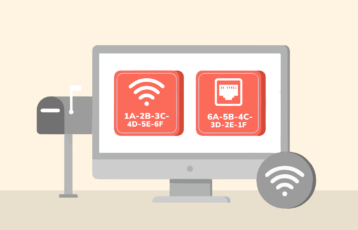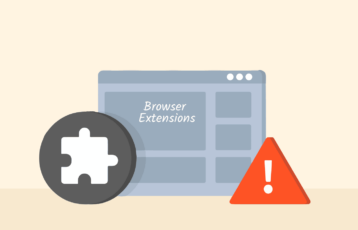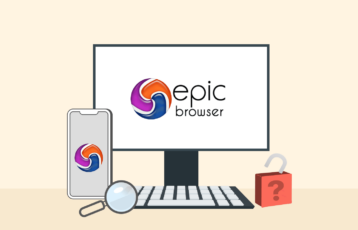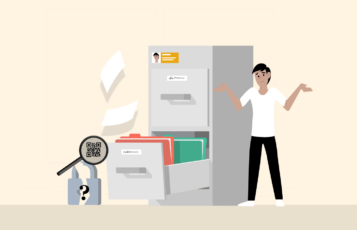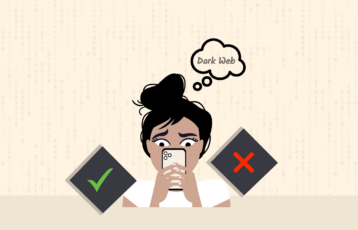Internet throttling is widespread among mobile network providers and internet service providers (ISPs), but most users do not know about this.
Users pay for the internet but get cheated by internet service providers in most cases without knowing what is happening at the backend. However, not every internet service provider does this.
If you notice that your bandwidth is throttled, then it’s time to fight back and grab what belongs to you. You may be wondering how. Do not worry; this article will show you how to stop internet throttling quickly.
What exactly is internet throttling?
Internet throttling is also known as bandwidth throttling. Internet service providers limit your bandwidth once they feel you have reached your monthly bandwidth cap. That might also have raised your eyebrows, and you probably would be asking, “Is my ISP watching my movies online? The answer is yes. That is why it is crucial to stop ISP tracking.
Returning to internet throttling, your ISP determines your monthly cap, but in most instances, the cap is not justifiable.
Sometimes, you do not necessarily have to reach your monthly data cap before your internet gets throttled by your ISP. An ISP would usually decide to limit data cap for specific areas, certain sites you use, locations, or to make more profit.
And sometimes, they could do it to free congestion. Instead of increasing their infrastructure to accommodate more traffic, they would throttle your bandwidth. The end users are the losers who bear the brunt of ISP’s shortcomings.
Some ISPs are usually fair and would charge you less monthly when your internet is throttled. Some would also notify you in advance if your region was throttled for one reason or the other and charge you less.
However, only a few internet service providers are sincere. Most would throttle your bandwidth, slowing down your connections and causing discomfort. Sometimes, your network might even go completely off for a few seconds.
What isn’t internet throttling?
Slow internet connection speeds don’t necessarily mean internet throttling. Internet speeds depend on various factors, most of which are unrelated to the ISP.
Some aspects that impede your internet connection speed include issues with local infrastructure, network congestion, and the type of Wi-Fi router.
Sometimes, your ISP could cause lower connection speeds without throttling your connection. For instance, an ISP could cap your data plan. The provider shuts down the traffic upon reaching a specific data package usage. When this happens, your internet doesn’t slow down but fails to establish altogether.
Why is my internet speed fluctuating?
Most times, it doesn’t matter if you pay for an unlimited data plan. It also doesn’t matter if you can stream multimedia with good speed. Your internet can still be throttled when you hit 50GB, 100GB, or, as the case may be, in your internet billing circle.
You may have observed that your internet is not as fast as it used to be at some periods of the month. Or maybe you experience slow speeds while torrenting or doing similar activities online. It indicates that you were a victim of internet throttling in those periods.
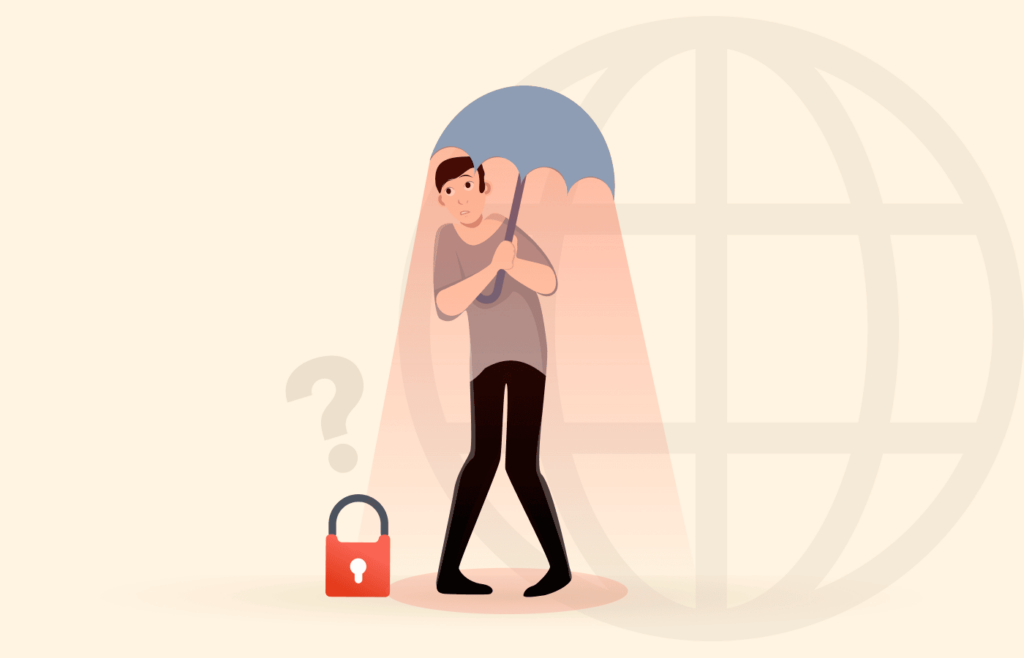
Nothing is more frustrating than when your internet slows down, and your Netflix, Hulu, or other videos start buffering. Or your content won’t load with speed. It makes you waste a lot of time and not enjoy your movies, live shows, or sports.
You would also be unable to download or upload documents quickly; gaming won’t be pleasurable. You would not capture every moment in a TV program. Live events and sports activities would all be frustrating to watch online. Sometimes, your emails would also be in the outbox folder and not getting delivered immediately.
Why do ISPs throttle your internet?
Most ISPs cannot keep their promise and intentionally slow down your bandwidth.
They promise you super fast and unlimited bandwidth, but after you purchase the service, they go behind and slow down your internet from the backend.
Most internet service providers cannot keep their promise of high bandwidth activities, like 4k gaming or streaming. As mentioned earlier, it doesn’t matter what internet subscription package you paid for. Internet service providers would still be throttling your connection, thereby causing disruption.
Sometimes, ISPs monitor your activities to know when you are backing up large files to the cloud. They’ll throttle your internet when they discover massive file downloads/uploads, which reduces your connection speed. This can be frustrating and time-wasting for you.
Some ISPs are also trickery and can throttle your internet just to make you think your internet subscription package is insufficient.
Don’t fall for this trap because they want you to purchase a higher subscription package. You should also note that it doesn’t matter if you are on an unlimited plan.
Every ISP would throttle your internet at some point, irrespective of your internet plan. However, here are some legitimate reasons why your internet may be throttled.
Unfair advantage and fast lanes
For a long time, big streaming sites have carried out an unfair practice of paying ISPs for faster content load times. This is one of the numerous ways internet service providers make additional money.
Internet service providers would throttle streaming competitors’ load time to give an unfair advantage to the streaming platform that paid them.
That implies if you are streaming content from a site that did not pay the ISP for faster load time, the ISP will throttle your bandwidth. It is a manipulative and unfair practice, which means you would not have a good internet experience whenever it occurs.
This prioritization is illegal in EU countries, but that is not true in the US. It is because the US government revoked net neutrality laws in 2018. Organizations and entities can control ISPs and the internet, in general, due to the net neutrality law. This gives more significant streaming and content providers the ability to manipulate ISP, but the end-user bears most of the brunt.
Legitimate reasons for Internet throttling by ISPs
You may be a victim of internet throttling for a few legitimate reasons. Those include the following:
- Enforcement of data limit based on the package of your subscription.
- Blocking DDoS attacks (Distributed Denial of service).
- Management of Network congestion.
- Traffic optimization.
How does internet throttling work?
ISPs have complete control over your internet speeds. There are various determining factors for internet throttling by your ISP, including.
Choice of data plan
Usually, subscribers are grouped into highest-paying to lowest-paying by ISPs. The former is a fast-lane subscriber, while the latter is a slow-lane subscriber.
In other cases, ISPs use a paid prioritization approach where firms pay to gain access to the fast lane category. Common examples include streaming services such as Amazon Prime or Netflix.
Such an approach means your connection will be throttled if your data plan doesn’t fall under the fast lane segment. Similarly, ISPs could provide faster connection speeds when accessing affiliated streaming sites but throttle connections on rival sites.
Amount of data used
ISPs can throttle connections based on the amount of data used. Based on usage, some ISPs introduce caps where exceeding the limit slows the connection.
However, some ISPs, such as AT&T, have a higher-allotment policy that allows subscribers to beat the data limits.
Website IP addresses
Your internet can be throttled based on your search history. ISPs can throttle IP addresses of websites that require large amounts of bandwidth, such as online gaming servers and streaming services.
Websites accessed via internet firewall
Internet throttling is a common censorship strategy used by organizations and governments. State-owned ISPs monitor specific sites with known TCP/IP ports to block access or throttle connection.
China and Iran are examples of countries where ISPs throttle connections using internet firewalls. The Great Firewall of China employs approaches such as deep packet inspection to throttle forbidden websites and services.
Using online firewalls, ISPs can detect VPN-encrypted traffic. However, you can use an obfuscation-equipped VPN to bypass firewall-based throttling. Obfuscation tools enable you to bypass deep packet inspection by disguising your VPN traffic as regular internet traffic.
Type of protocols used on the connection
ISPs commonly use deep packet inspection to monitor traffic. Internet traffic comprises packets that serve as a link between the server and your device. Using deep packet inspection, ISPs analyze individual bits of data (packets) to identify protocols that consume large amounts of bandwidth. A real-life example of this type of throttling is the slower speeds experienced when using torrents.
How to tell if your internet is being throttled
It is not tough to know if your ISP is throttling your bandwidth; we will show you how. We will further tell you how to block your ISP from throttling your connection.
Internet throttling doesn’t show you a physical or digital warning, unlike other types of traffic, such as road congestion. Most times, ISPs throttle your bandwidth without your notice. But you may know about it if you conduct frequent internet speed tests.
Due to the silent nature of internet throttling, many ISPs have successfully done this for an extended period without anyone detecting it. Some did it for months, while others did it for years, and no one noticed it.
So this brings us to why internet throttling is challenging to tell. Here are the reasons:
- Sometimes, it happens randomly, and you may not experience it.
- It targets specific internet traffic, such as large file uploads, downloads, or streaming.
- Affects a few subscriber bases or locations.
So, you must be wondering about the tools and ways to detect internet throttling, right? While these factors make it extremely difficult to tell when your internet is throttled, it is still possible to know through regular speed tests.
ISPs that impose bandwidth throttling?
The list of ISPs that throttle internet speed is very long. Here are the most popular ISPs with data limits:
- Xfinity
- Viasat
- Mediacom
- HughesNet
- Cox
- CenturyLink
- Cable ONE
- Buckeye Broadband
- AT&T
RNC, Frontier, and Spectrum are perhaps the best providers if you are looking for high-speed internet services without data caps.
How to carry out an internet throttling test
There are various methods to determine if your internet is throttled, and one of the easiest ways is to establish your internet connection speed.
It is a necessary measure before implementing the bypassing throttling method. Follow the steps below to conduct an internet speed test on Windows and Mac.
- Open your web browser.
- Visit Speedtest.net (you can also search in Google and go with any other site you find fit).
- You must download the internet speed test app for Android and iPhone.
Note: No matter what tool you choose to test your internet speed, the steps would look similar. I used Google’s native internet speed test tool for the illustration.
1) Click the “RUN SPEED TEST” button on the Google speed test page.
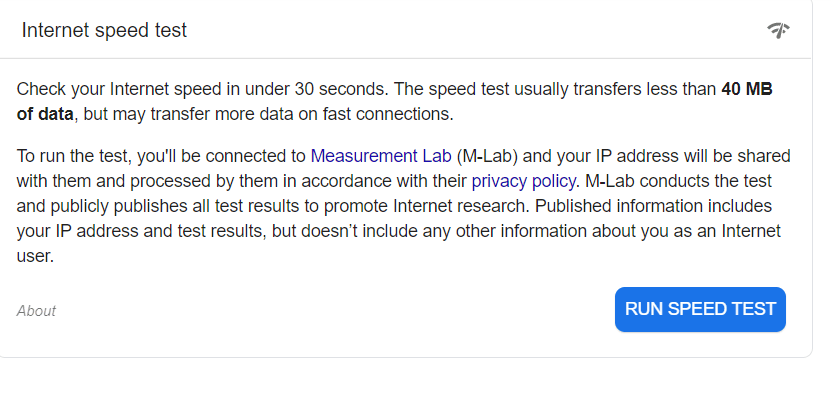
2) Allow the speed test to run for a while. The values would vary when the speed test is running.
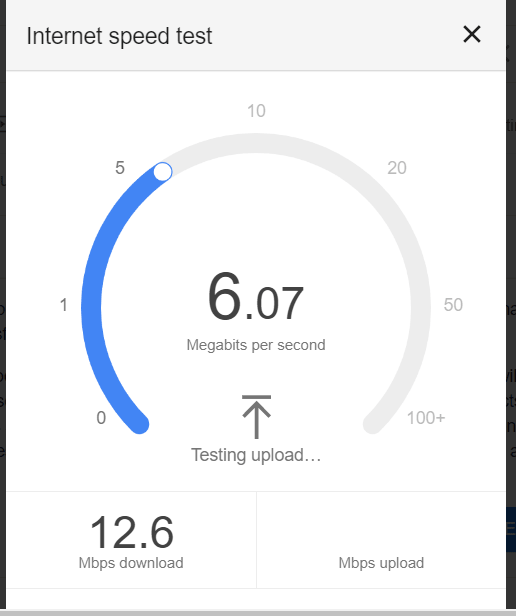
3) That is it. Your test will be completed a few seconds later.
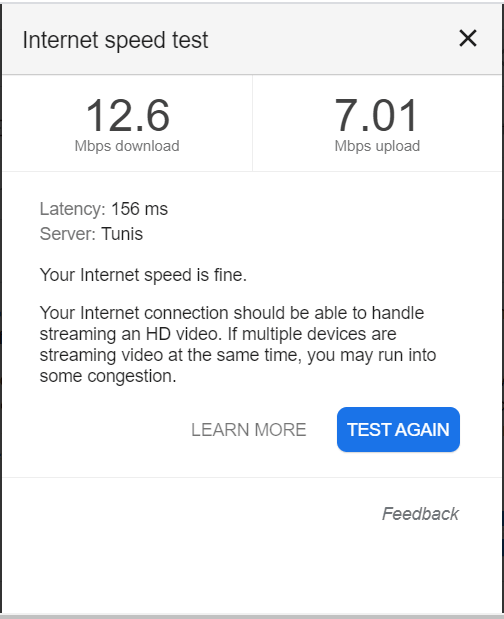
Check your internet speed at different times of the day to establish a speed baseline. Carry out speed tests regularly to determine when your bandwidth is throttled. A speed test is the fastest and easiest way to determine your internet speed.
One crucial factor is that some fraudulent ISPs would automatically disable throttling once they notice you are conducting a speed test.
Internet speed test using Command Prompt
Most ISPs would restore your internet speed when they discover you are doing an internet speed test from a web browser. However, your ISP would not notice if you used a command prompt to conduct a speed test.
First, your PC must be connected to a network before you can conduct an internet speed test on CMD. Otherwise, CMD would display an error message, “Could not find host result.” See the image below:
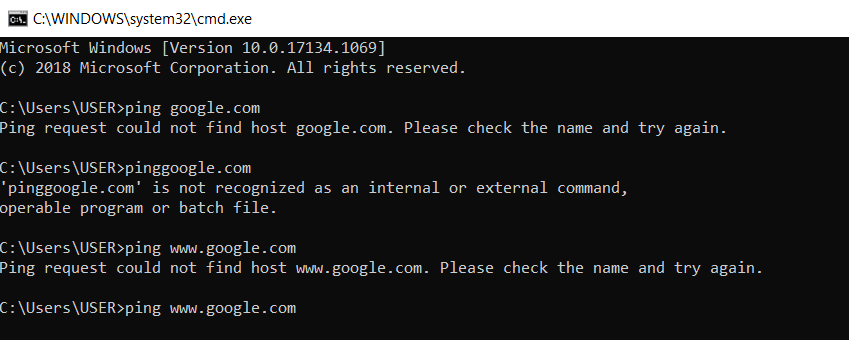
Once you have that covered, follow the steps below to monitor your internet speed on the command prompt. This would help you know if your bandwidth is throttled or not.
- Close all the active programs on your PC, especially applications that use the internet.
- Press the start button and R key concurrently to open the Run dialogue box.
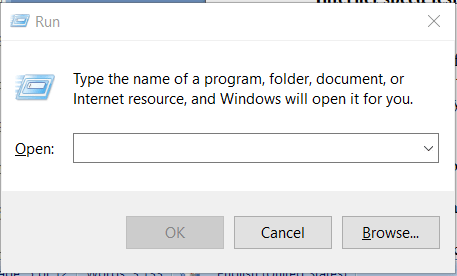
- Type CMD inside the text box and click OK. The command prompt window would appear with a dark interface.
- Type ping followed by any URL, e.g., ping www.privacysavvy.com or ping www.google.com, and allow CMD to run for some seconds.
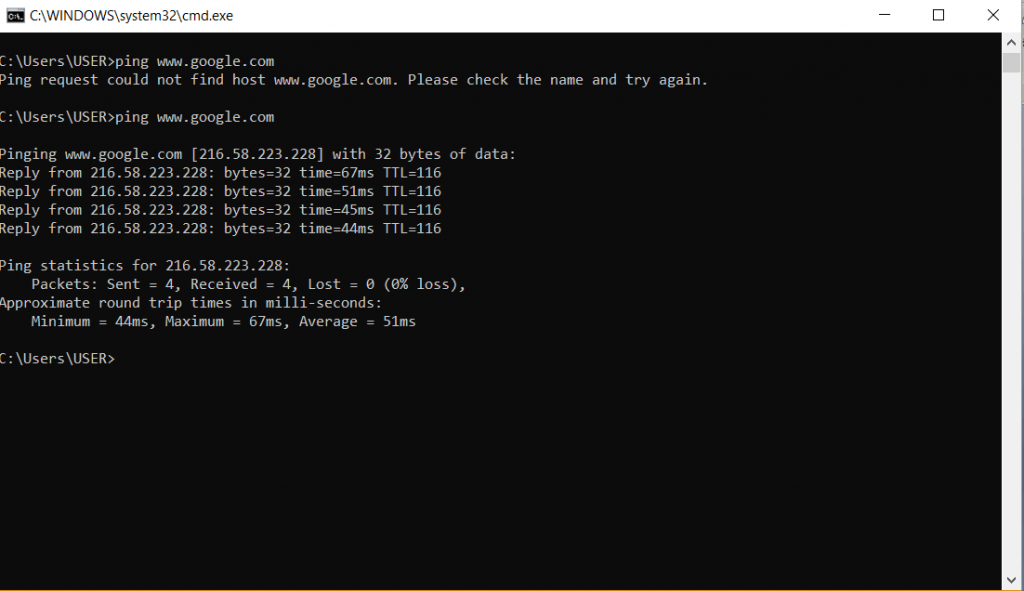
After a few seconds, your internet test result will be displayed, showing you the maximum and minimum average time your network received/sent a signal. The result in CMD is measured in milliseconds.
Note: You need to carry out internet tests for various sites because your speed may be lower due to a slow server on the receiving website. Therefore a ping test for multiple sites would help you determine the average connection speed of your internet.
The CMD internet speed test is more efficient than online tools for internet speed. The reason is that speed test websites have a lot of graphic designs, scripts, data, and text that could slow down the internet speed. The command prompt is lightweight and would give you a more accurate test result.
How to stop internet throttling
Internet throttling can cause disruptions and frustrations, but we have developed practical solutions for you. Below are the best methods that we tested and work well to have uninterrupted internet usage all year round.
Option 1: Fixing internet throttling with a VPN
Before you proceed to install a VPN, you must, first of all, monitor your internet speed. You should follow the steps above to monitor your internet speed and establish a baseline.
Search for a good VPN that can help you provide a solution for internet throttling. There are a lot of VPNs out there on the internet, but most of them cannot solve throttling issues. One of the reasons why you should use a reputable VPN is because top movie streaming sites deploy anti-VPN technology.
They will block you if they cannot dictate your location or sense that your IP is associated with a VPN. Streaming sites such as Netflix, Crackle, Hulu, and many more deploy geo content restrictions.
Therefore, they may detect your VPN and block you. But a top VPN provider would ensure that your IP is hidden.
How can a VPN help you overcome bandwidth throttling?
VPN can help you stop bandwidth throttling by masking your IP. An Internet service provider can see all your Internet activities, including the websites you visit, your downloads, what you stream, and lots more. Depending on the site you visit and the bandwidth you consume, they would throttle your bandwidth, making your connections slower.
Another point to note is the fast lane contract. Your bandwidth may be throttled if your ISP has a fast-lane contract with a streaming company and you visit a rival platform. This would slow down your connection and disrupt your activities. That is where a VPN hides your online activities and ensures your ISP does not see what you do online.
A virtual private network (VPN) encrypts your internet traffic, hides your IP, and ensures that your ISP does not mark you for throttling. However, carrying out a speed test before installing a VPN is essential. After installing the VPN, you should also test your Internet speed to check for improvements.
When your VPN setup is complete, you can carry out heavy file downloads, uploads, and streaming without being detected and throttled. However, bandwidth throttling would affect everyone, whether using a VPN or not, if your ISP deploys a general throttling.
What else can a Virtual Private Network do?
VPNs are developed to provide freedom on the internet, protect you from hackers, and ensure your privacy and general security. A VPN can also enable you to overcome congestion due to peering.
Peering occurs when two internet service providers connect to exchange network traffic. It offers mutual benefits for ISPs.
However, peering can cause significant problems for streaming sites and end-users. The problem occurs when a streaming site forces either of the ISPs to exceed the agreed-upon internet bandwidth.
In some instances, the other ISP would refuse to make adjustments, which can cause congestion. This can lead to diminished internet speed for end users because two ISPs have conflicts.
Here are other significant benefits of a VPN
- Ensures fast internet connection speed.
- Ensures a maximum no-logs policy where no one can monitor or track your activities.
- VPN encrypts your data traffic.
- It allows you to watch your favorite content and channels while abroad.
- Some VPNs can work on multiple devices.
- Protects you from snoopers, spyware, and hackers.
- Solves the issues of congestion caused by internet peering conflicts. Some ISPs use third parties, which means your traffic would go through at least two servers before getting to you. This can cause congestion. A VPN would ensure that your internet traffic travels privately to you without congestion.
How to install a VPN
- Sign up for a secure and fast VPN such as ExpressVPN or NordVPN.
- Download and install the VPN app compatible with your device.
- Start your VPN and sign in.
- Choose a location and connect to a server.
- Enjoy a fast and secure internet connection without bandwidth throttling.
3 best VPNs to bypass bandwidth throttling
The best VPN service providers can let you evade internet throttling anywhere.
1. ExpressVPN
ExpressVPN is a reliable, fast, and safe option to stop bandwidth throttling. The service has more than 3000 servers spread across 94 countries worldwide. It supports 4K UHD video streaming and super-fast torrenting while being safe and secure.
The VPN has DNS leak protection and TrustedServer technology to improve online security and privacy. ExpressVPN averages 87.78 Mbps (downloading speed) and 42.22 Mbps (uploading speed) on a 100 Mbps internet package.
ExpressVPN’s cheapest plan costs $6.67/month and comes with a money-back guarantee in the 30-day trial period.
2. Surfshark
SurfsharkVPN is an affordable VPN service to bypass internet throttling. It has optimized servers to provide you with the best internet experience. The VPN can bypass geo-restrictions on services such as Netflix without throttling.
It has over 3,200 servers in 100 countries. Further, it offers an average of 81.32 Mbps downloading speed and 76.12 Mbps uploading speed on a 100 Mbps connection. The VPN service integrates key privacy features such as open-source code, internet kill switch, secure DNS, no-logs policy, and AES 256-bit encryption to stop throttling. Subscriptions start from $2.49/month with a 30-day money-back guarantee on the free trial.
3. NordVPN
Obfuscation and security are its strong selling points. The VPN service hosts more than 5400 countries spread over 60 countries worldwide. It also offers advanced features such as a kill switch and Onion Over VPN. Also, the no-logs policy ensures secure and safe browsing.
NordVPN offers average speeds of 83.82 Mbps for downloading and 44.64 Mbps for uploading on a 100 Mbps connection. The service focuses more on security but can unblock content and bypass online censorship.
Option 2: Change of ISP
This is the easiest fix to stop ISP throttling. But it might not be the right solution for everyone. That is because all the ISPs in your area might have the same policies.
Yet, it is always worth it to do your research and try. You may swap to another ISP if you observe that your ISP is throttling your bandwidth. However, there is no guarantee that your new ISP will not throttle your internet. So, as noted earlier, do proper research before choosing your ISP.
Option 3: Use of Proxy
A proxy server acts as an intermediary between a device and the internet. It takes requests from a client device, sends them to a server, and fetches data back to the client device. You should opt for a trusted proxy server vendor because some come with viruses and malware programs.
Your ISP usually throttles your bandwidth when they discover you are downloading, uploading heavy files, or streaming. A good proxy site would encapsulate your encryption and ensure your ISP does not see what you do online.
A proxy server would further ensure speed and protection for your device. Proxy servers are mostly free, so you do not have to worry about costs. Follow the steps below to configure a proxy server on Windows when you find a reliable vendor.
To configure a proxy server on a Windows machine, open the settings application through the start menu.
1) Click on the start menu and type settings.
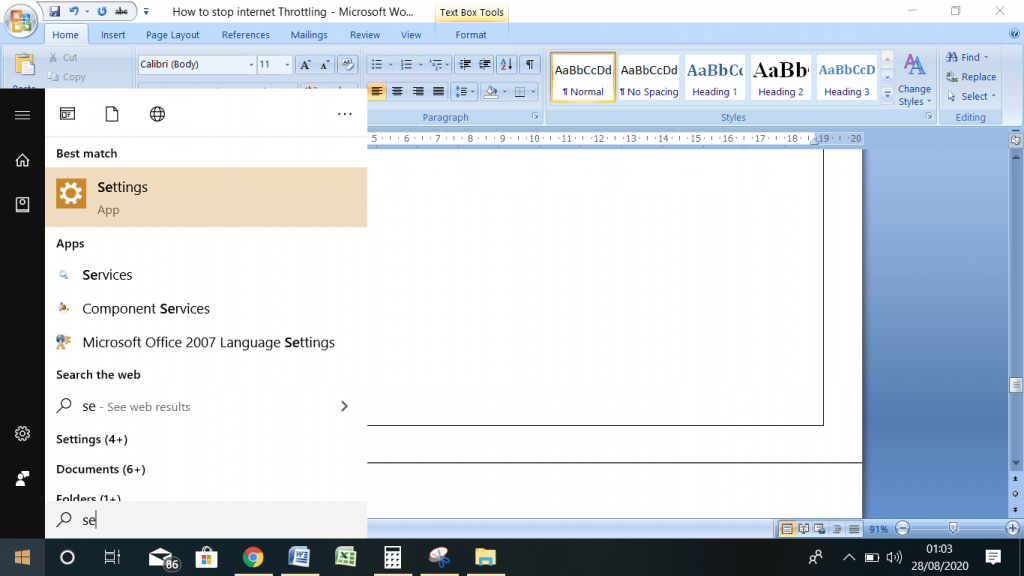
2) In the settings window, you will find many subsections.
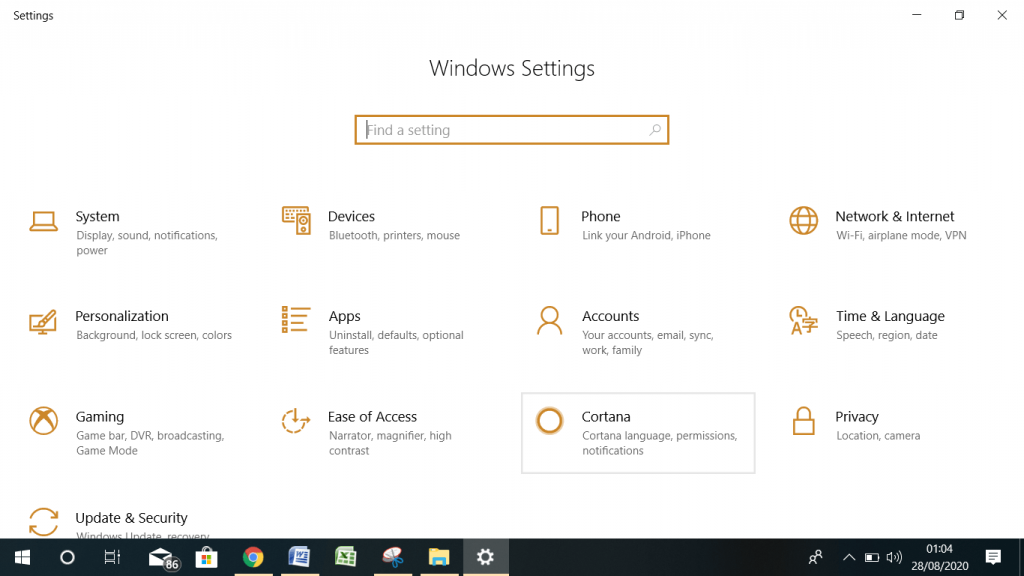
3) Now, click on the “Network and Internet” icon, and then click on “Proxy.”
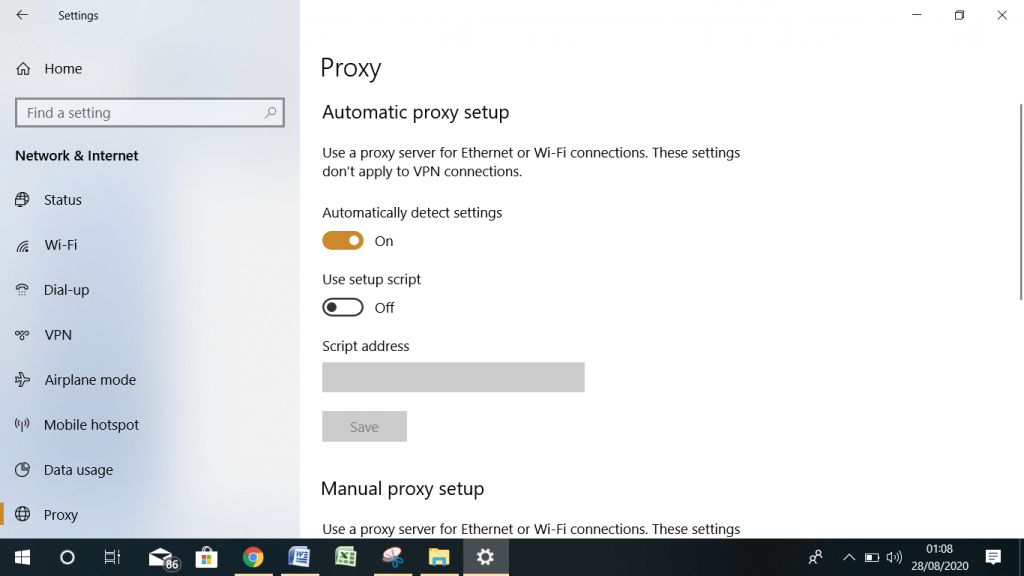
4) Click and turn on the “Use a proxy server” button. Enter your proxy address and port.
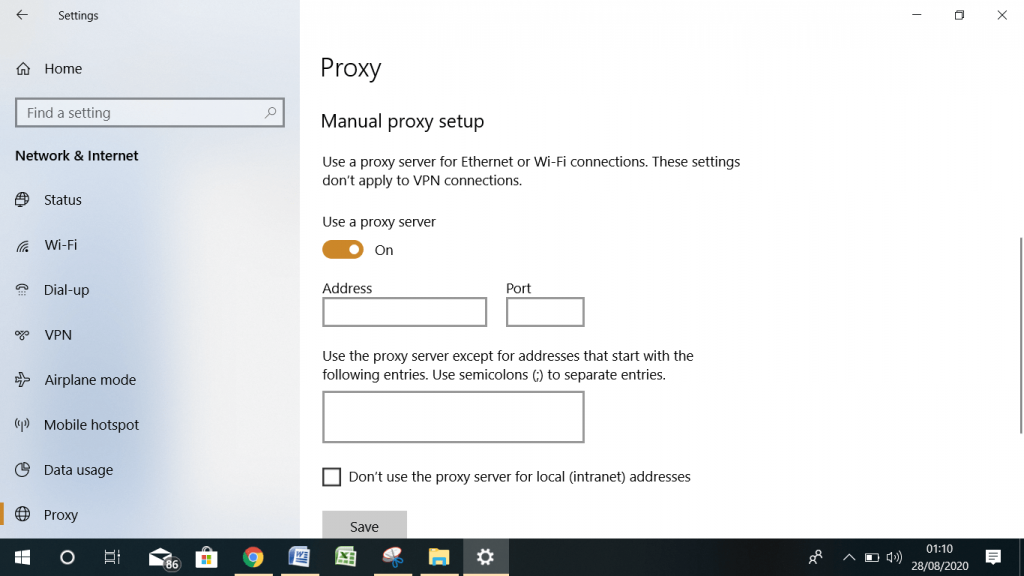
5) That is it. We are done.
How to set up a proxy server on Android
Setting up a proxy server on an Android device is straightforward. Follow the steps below:
- Open your Android device settings.
- Tap on the Wi-Fi icon.
- Tap and hold the name of your Wi-Fi network name until the pop-up appears.
- Tap on Modify network.
- Tap on advanced options.
- Tap on the manual icon.
- Now, you can change your proxy settings. Enter the proxy provider hostname alongside the port.
- Tap the save button.
How to set up a Proxy on iPhone
Configuring a proxy server on your iPhone device would ensure you remain anonymous and safe while surfing the internet. Your ISP would be unable to track your activities and throttle your bandwidth. Of course, these advantages also apply to Android phones alongside all the devices you set up a proxy server on.
Follow the steps below to set up a proxy server on your iPhone:
- Go to settings.
- Tap on the name of your device’s Wi-Fi network.
- Scroll down and find “HTTP Proxy” at the bottom of the screen.
- It’s turned off by default, which implies that your iPhone would not use a proxy while connected to the internet.
- Select “Auto” to enable your device to detect a configured proxy.
- Enter the address of the proxy server.
- For manual configuring, you must select the manual option and enter the address and port of the proxy server you wish to use.
- Enjoy your network connection without your ISP throttling your bandwidth.
Setting up a Proxy server on Linux
Follow the steps below to set up a proxy on Linux:
- Open the terminal on your Linux machine.
- Log in as a root user.
- Use “nano‘ to open the “/etc/environment” file.
- A text editor would open up to enable you to configure your proxy.
- You would see a list of endpoints. Select any of them.
- Press CTRL + X when you are done editing the text file.
- Save and confirm by hitting the enter button on your keyboard.
- Lock the file and restart your device.
Option 4: Upgrade your data plan
You can stop internet throttling by upgrading your data plan. A more flexible data plan raises the data cap limit, putting you in a high-tier segment.
An unlimited subscription plan also bypasses data caps, thus providing access to higher fast-lane connection speeds.
This solution has its pros and cons. On the one hand, it bypasses paid prioritization and data cap. However, on the other hand, it is more expensive and doesn’t solve web-based and protocol-based throttling.
How to stop mobile data throttling
Internet throttling is more rampant in mobile networks than in home broadband connections. This is because mobile networks have many limitations that give your network provider much control. Here are some of the limitations of mobile networks;
- Infrastructure: Mobile network towers have slower speeds and a limited bandwidth than broadband connections. However, the introduction of the 5G network has helped to close down the gap.
- Soft caps: Some mobile network providers control your internet speed using soft caps that target high-bandwidth activities. For instance, your provider may allocate you maximum streaming speed for the first 10GB, after which they throttle your internet speed to 10mbps.
- Latency: Mobile networks do not have consistent latency, which leads to speed fluctuations. This is why online videos and games are more likely to lag when using mobile networks than when using broadband connections
ISPs mostly implement data caps in wireless mobile connections rather than wired broadband connections to restrict your data usage. Also, they impose data caps in ‘unlimited’ data plans and throttle your speed if you exceed the limit.
A Virtual Private Network is the best solution to stop mobile data throttling. VPN encrypts your traffic and masks your IP address, preventing your provider from capping your bandwidth based on your internet activity. Also, a VPN can help you eliminate soft caps that slow down your streaming speed after reaching a certain level of bandwidth consumption.
Throttling and Net Neutrality
ISPs must treat all traffic and internet content equally under the net neutrality legislation, enabling a free and open connection. Nonetheless, different nations have different laws and regulations.
For instance, the U.S. has revoked the net neutrality regulations. Such a country has permitted some aspects of internet throttling:
- Specific types of web content can be throttled by ISPs, affecting what users view and interact with online.
- Higher rates on various services, such as streaming, have a trickle-down effect on users.
- ISPs can entice users in lower-cost tiers to consider higher subscription plans by slowing connection speeds.
Net neutrality proponents contend that the optimum conditions for innovation are deeply embedded in the free and open internet. Limiting usage through neutrality benefits ISPs at the expense of internet growth and advancement.
Is internet throttling legal?
It is difficult to answer whether internet throttling is legal or illegal, and there is no straightforward answer. Internet throttling is terrible, but it has a few positive sides. For example, throttling to stop a DDoS attack is one of its positive aspects.
DDoS or denial of service attack is a cyber-attack whereby the attacker seeks ways of making a network service, resource, or machine unavailable or significantly slower. This can disrupt service and operation because the attack would flood the system’s bandwidth resources. ISPs can throttle bandwidth to stop DDoS attacks when noticed.
If this is the case for throttling, then it is entirely justified. But most other reasons for throttling are unjustifiable simply because the ISPs cannot keep their promise. It is easy to wonder if throttling is illegal or not due to both sides of throttling.
However, in the US, only legal frameworks should be responsible for internet throttling; the same applies to the European Union. Therefore, ISPs’ internet throttling for any other reason besides legitimate network management is illegal. However, it is difficult to establish if the reasons for throttling are valid or invalid when it occurs.
Conclusion
Network throttling can significantly slow down your internet and disrupt activities. ISPs usually do this because they cannot keep their promise while signing up. It is your job to monitor your internet speed to determine throttling on your network.
You can install a VPN to help hide your activities from your ISP and ensure your network is safe. You can also change your ISP if you think other ISPs would be better.
If you decide to go with a VPN, bear one thing in mind. Any streaming platform using anti-VPN technology can detect a low-grade VPN. Therefore, you should search for a reputable VPN that can bypass streaming channels’ anti-VPN technologies.
If you carry out a regular speed test and notice no change, your ISP is reliable, and there is no reason to change anything. However, only a few ISPs offer unlimited bandwidth.
Most would throttle your bandwidth when they notice heavy traffic from your IP. Furthermore, every signal that reaches your systems and devices comes from a single network cell tower. These single network towers are shared between multiple individuals concurrently.
We hope you find this page helpful. This guide has shown you several ways of stopping ISP internet throttling; now, the ball is in your court to decide what to do. Do not hesitate to ask questions or share your thoughts with other users via the comment box below.
FAQs
Limiting the maximum amount of data sent over a set period is known as bandwidth throttling. For instance, your ISPs can throttle bandwidth at 10Mbps. This means the maximum amount of data transmitted cannot exceed a speed of 10Mbps. The VPNs on this list use advanced encryption, which prevents your ISP from seeing what you are doing online. This helps you to avoid ISP throttling.
Bypassing ISP speed limits is only possible through data plan upgrades. Speeds are fixed and cannot be bypassed even with a VPN.
Congestion has a profound impact on internet throttling. High congestion leads to high amounts of internet throttling as ISPs try to distribute bandwidth equally. Higher bandwidth consumption in online video games, torrenting, and HD streaming trigger throttling.
While VPNs seldom throttle your speed, they can affect speeds. When using a VPN, internet traffic travels a long distance, which might take slightly longer to communicate. That means the distance between the device and the VPN server affects the connection speeds. However, VPN providers address the challenge by setting up many server locations. Also, more efficient VPN protocols are vital in mitigating the problem.
Interestingly, yes. However, you must use a reliable VPN with security features. Often, free VPNs are prone to data leakages, and some even sell user data to third parties. Also, it is essential to note that free VPNs have no assurances.
Images via Pixabay.
